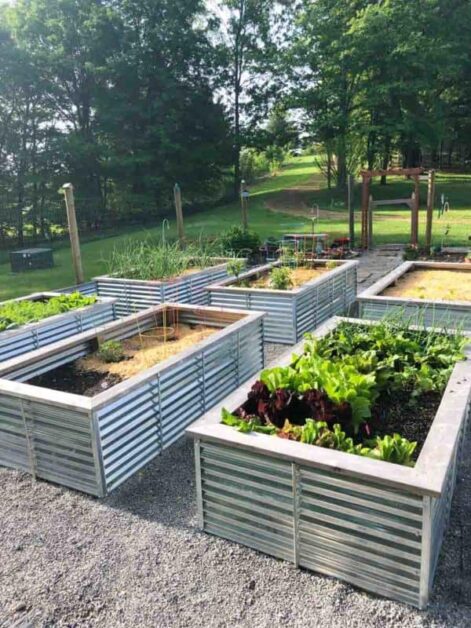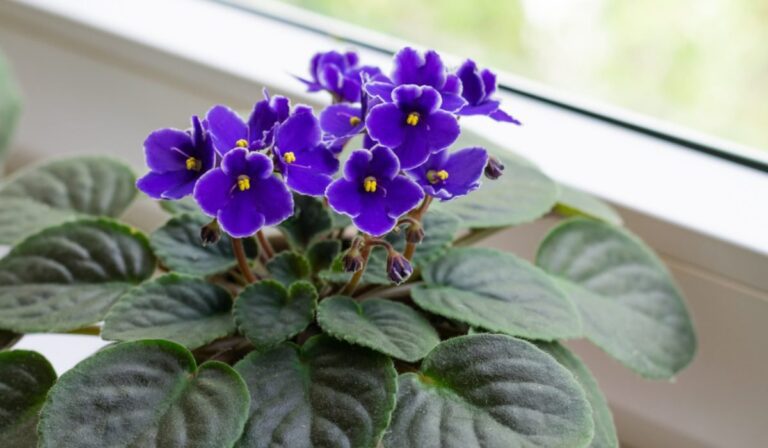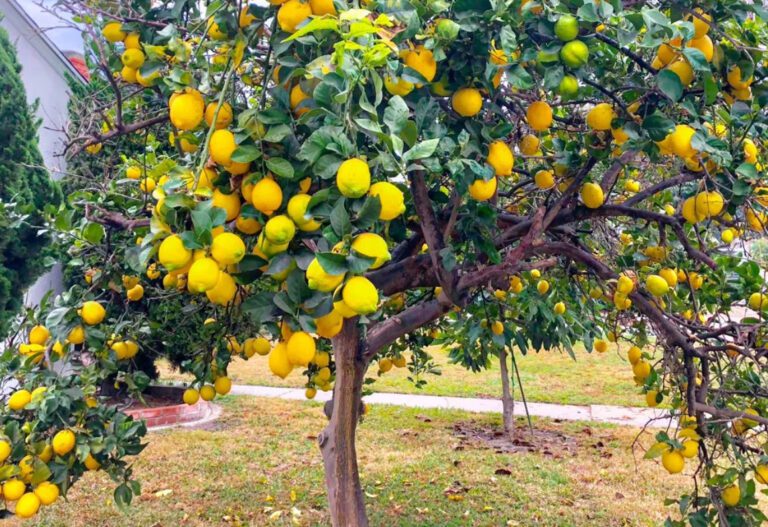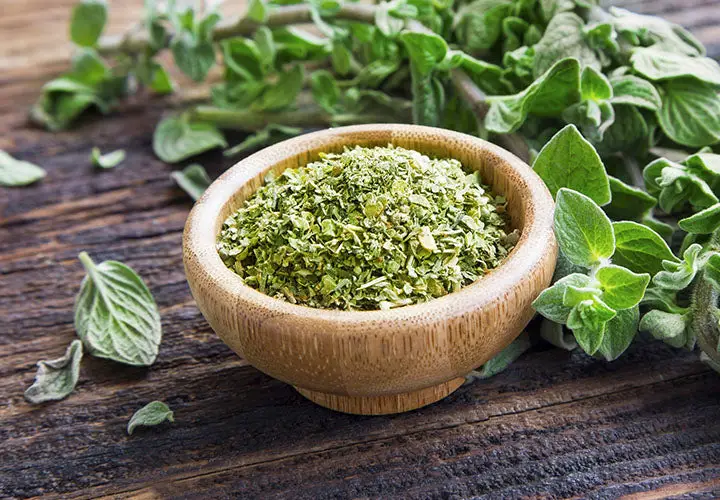Gai Lan Gardening: Mastering Chinese Broccoli
Table of Contents
Benefits of Growing Gai Lan in Your Garden
Gai Lan, also known as Chinese broccoli, is a nutritious and delicious vegetable that can be a valuable addition to your garden. One of the key benefits of growing Gai Lan in your garden is the freshness and quality of the produce you can enjoy. By harvesting your own Chinese broccoli, you can ensure that it is free from harmful pesticides and chemicals, offering you a healthier option compared to store-bought alternatives.
Moreover, cultivating Gai Lan in your garden allows you to have a sustainable source of this versatile vegetable right at your fingertips. Being able to pick fresh Chinese broccoli whenever you need it not only provides convenience but also reduces your carbon footprint by cutting down on transportation emissions associated with store-bought produce. This environmentally-friendly choice contributes to a greener lifestyle while promoting self-sufficiency in your gardening endeavors.

Choosing the Right Location for Your Chinese Broccoli Plants
When choosing the right location for your Chinese broccoli plants, it is crucial to consider a few key factors that will impact the growth and productivity of your Gai Lan. First and foremost, Chinese broccoli thrives in full sun, so selecting a spot in your garden that receives at least 6-8 hours of direct sunlight each day is essential for optimal growth. Without adequate sunlight, your plants may become leggy, with sparse foliage and reduced yield.
In addition to sunlight, it is important to choose a location with well-draining soil to prevent waterlogging, which can lead to root rot and other issues. Chinese broccoli plants prefer moist, fertile soil rich in organic matter, with a slightly acidic to neutral pH level between 6.0 and 7.0. Avoid areas with heavy clay soil that can retain too much water or locations prone to flooding. By selecting a sunny, well-draining site with nutrient-rich soil, you can create the ideal growing conditions for your Chinese broccoli plants to flourish and produce bountiful harvests.
Preparing the Soil for Optimal Gai Lan Growth
To achieve optimal growth of your Gai Lan plants, preparing the soil is a crucial step that should not be overlooked. Chinese broccoli, like many other vegetables, thrives in well-draining, nutrient-rich soil. Before planting, it is essential to ensure that the soil is loose and fertile to promote healthy root development and overall plant growth. Testing the soil pH is a good starting point to understand its acidity or alkalinity levels, which can impact nutrient availability to the plants.
Incorporating organic matter such as compost or well-aged manure can improve the soil structure, enhance water retention capabilities, and provide essential nutrients for your Gai Lan plants. Amending the soil with balanced fertilizer before planting can also help in providing the necessary nutrients for healthy growth. Proper soil preparation sets the foundation for a successful Chinese broccoli garden, ensuring that your plants have the best environment to thrive in and produce a bountiful harvest.

Selecting the Best Varieties of Chinese Broccoli to Plant
When selecting the best varieties of Chinese broccoli to plant in your garden, it’s essential to consider factors such as climate, soil conditions, and personal preference. Some popular varieties that are well-suited for home cultivation include Green Lance, Green King, and Kailaan. Green Lance is known for its long stems and tender leaves, making it a favorite for stir-frying. Green King, on the other hand, produces large, dark green leaves that are perfect for steaming or sautéing. Kailaan, also known as Chinese kale, is a versatile variety that can be used in a variety of dishes, from soups to salads.
Another excellent option is the Emperor’s Jade variety, which produces vibrant green, thick stems and leaves that are ideal for both cooking and garnishing dishes. Its mild flavor and tender texture make it a popular choice for many gardeners. For those looking for a more compact variety, the Chinese Kale Purple Flowering is a great option. This variety has striking purple stems and flowers, adding a unique visual appeal to your garden while providing delicious and nutritious greens for your recipes.
Planting Chinese Broccoli Seeds or Seedlings
When planting Chinese broccoli seeds or seedlings, it is essential to ensure they have the right conditions to thrive. Whether you opt for seeds or pre-grown seedlings, the key is to provide well-draining soil and ample sunlight for these plants. Chinese broccoli, also known as Gai Lan, prefers full sun but can tolerate partial shade.
Seeds should be sown directly into the soil at a depth of approximately 1/4 to 1/2 inch, while seedlings can be transplanted with care to prevent damage to their delicate roots. Keep the soil consistently moist but not waterlogged to aid in germination and early growth. Proper spacing between plants is crucial to allow them to develop fully and avoid competition for resources.

Watering and Fertilizing Your Gai Lan Plants
Proper watering and fertilizing are crucial for the healthy growth of your Gai Lan plants. Chinese broccoli, like many vegetables, requires consistent moisture to thrive. The best way to determine when to water is by checking the soil moisture levels regularly. It’s recommended to water your Gai Lan plants deeply, allowing the water to reach the roots, but be mindful not to overwater, as this can lead to root rot.
When it comes to fertilizing your Gai Lan plants, a balanced fertilizer high in nitrogen is ideal for promoting lush leafy growth. Applying a slow-release fertilizer or a liquid fertilizer every few weeks can provide the necessary nutrients for your Chinese broccoli plants. Be sure to follow the instructions on the fertilizer package to avoid overfertilizing, which can lead to excessive foliage growth at the expense of flower and seed production.
Managing Pests and Diseases in Your Chinese Broccoli Garden
Pests and diseases can pose a significant threat to your Chinese broccoli garden, potentially impacting the health and yield of your plants. When it comes to pests, common culprits that can target Chinese broccoli include aphids, cabbage worms, and flea beetles. These pests can damage the foliage, leading to stunted growth and reduced productivity. It is essential to monitor your plants regularly for any signs of pest infestations and take proactive measures to control them.
In addition to pests, Chinese broccoli plants are susceptible to diseases such as downy mildew, powdery mildew, and clubroot. These diseases can weaken the plants, affect their nutrient uptake, and ultimately lower the quality of the harvest. To prevent the spread of diseases in your Chinese broccoli garden, practice good hygiene, such as removing and disposing of any infected plant material promptly. Proper spacing between plants, adequate air circulation, and implementing crop rotation can also help minimize the risk of disease outbreaks.
The table below shows managing pests and diseases for your Chinese broccoli garden.
| Pests | Description | Preventive Measures |
| Rabbits | Rabbits can quickly decimate your broccoli plants. Use good fencing, sulfur deterrent sprays, or predator scent sprays. A dog near the garden can also deter rabbits. | Consider using rabbit repellents and create a protective barrier around your plants. |
| Flea Beetles | These tiny beetles leave “shothole” effects on leaves. They weaken plants and make them susceptible to disease. | Clean up garden debris in fall, rotate crops, and use row covers to protect young plants. Apply neem oil if infested. |
| White Cabbageworm | White cabbageworm larvae feed on leaves, causing damage. Handpick them or encourage natural predators. | Attract birds, ladybugs, and other beneficial insects to control cabbageworms. |
| Diamondback Moth | Larvae of diamondback moths chew leaves, creating holes. | Regularly inspect plants and consider using biological controls. |
| Thrips | Thrips feed on leaves, causing discoloration and distortion. | Use reflective mulch, sticky traps, or insecticidal soap to manage thrips. |
| Diseases | Description | Preventive Measures |
| Clubroot | A soil-borne disease that affects roots, causing stunted growth. | Rotate crops, avoid acidic soil, and choose resistant varieties. |
| Downy Mildew | Fungal disease causing yellow spots on leaves. | Provide good air circulation, avoid overhead watering, and use fungicides if needed. |
| Black Rot | Bacterial disease causing yellowing and wilting of leaves. | Practice crop rotation, remove infected plants, and maintain proper hygiene. |
| Fusarium Yellows | Soil-borne fungal disease affecting roots and vascular system. | Use disease-free seeds, improve soil drainage, and avoid overwatering. |
Pruning and Thinning Chinese Broccoli for Better Yields
When it comes to increasing the yields of your Chinese broccoli plants, proper pruning and thinning are essential practices to implement. Pruning involves selectively removing damaged, diseased, or overcrowded branches to promote healthier growth and better airflow within the plant. This process not only encourages the development of stronger stems but also directs the plant’s energy towards producing more bountiful and robust flower heads. Thinning, on the other hand, involves removing excess seedlings or young plants to allow adequate spacing between each plant for optimal growth. By thinning out Chinese broccoli plants, you can prevent overcrowding, reduce competition for nutrients and sunlight, and ultimately improve the overall health and productivity of your crop.
Furthermore, thinning out Chinese broccoli plants can significantly enhance the quality of the harvest by enabling the remaining plants to receive ample nutrients and resources for their development. When plants are overcrowded, they tend to compete for essential elements like water, sunlight, and soil nutrients, which can lead to stunted growth and inferior yields. By strategically thinning out Chinese broccoli plants at the right time, typically when they have reached a certain size and are well-established, you can maximize the individual plant’s access to necessary resources, resulting in larger, healthier, and more flavorful harvests. Thinning also promotes better air circulation around the plants, reducing the risk of fungal diseases and other detrimental issues that can arise in crowded growing conditions.
Harvesting Gai Lan at the Right Time for Maximum Flavor
Harvesting Gai Lan at the right time is crucial to ensure you enjoy the maximum flavor and nutritional benefits this Chinese broccoli has to offer. Gai Lan is typically ready to harvest between 50-60 days after planting, but the best indicator for when to harvest is the size of the florets. Ideally, you want to pick Gai Lan when the florets are still tight and have not yet fully opened. This ensures a tender and flavorful harvest.
It’s recommended to harvest Gai Lan in the morning when the temperatures are cooler, as this helps preserve the flavor and nutrients of the plant. When harvesting, use clean and sharp scissors to cut the main stem of the plant just above the outermost leaves. This method allows for continued growth and potential regrowth for a second harvest later in the season. Remember, the key to getting the best taste out of your Gai Lan is picking it at the optimal time when the florets are at their peak freshness.

Storing and Preserving Chinese Broccoli after Harvest
After harvesting your Chinese broccoli, it is crucial to store and preserve it properly to maintain its freshness and flavor. One method is to place the harvested Gai Lan in a plastic bag with a paper towel to absorb excess moisture, then store it in the refrigerator’s crisper drawer. This helps keep the Chinese broccoli crisp and prolongs its shelf life for up to a week.
Another effective way to preserve Chinese broccoli is by blanching it before freezing. To do this, simply boil a pot of water, add the Gai Lan for a quick dunk (about 2 minutes), then transfer it to an ice bath to stop the cooking process. Once cooled, drain the Chinese broccoli thoroughly and freeze it in airtight containers or freezer bags. This method helps retain the vegetable’s nutrients and texture for future use in soups, stir-fries, or other dishes.

Cooking and Eating Gai Lan: Delicious Recipes to Try
Gai Lan, also known as Chinese broccoli, is a versatile and nutritious vegetable that can be enjoyed in a variety of delicious dishes. One popular way to savor the crisp texture and slightly bitter flavor of Gai Lan is by stir-frying it with garlic and oyster sauce. This simple yet flavorful recipe allows the natural taste of the vegetable to shine through while being complemented by the savory notes of the sauce.
For those looking to add a healthy twist to their menu, steaming Gai Lan and serving it with a drizzle of sesame oil and a sprinkle of sesame seeds can create a light and refreshing side dish that is both satisfying and nutritious. The gentle cooking method of steaming preserves the vibrant green color and crisp texture of the vegetable, making it a visually appealing addition to any meal. Whether stir-fried or steamed, Gai Lan offers a delightful culinary experience that is sure to please both novice cooks and seasoned food enthusiasts alike.

Using Chinese Broccoli in Traditional Chinese Medicine
Chinese broccoli, also known as Gai Lan, holds a special place not just in culinary traditions but also in traditional Chinese medicine. In TCM, Chinese broccoli is believed to have cooling properties that help to balance the body’s internal heat. It is often used to clear heat from the liver and treat conditions like sore throat, eye inflammation, and skin rashes. Additionally, Chinese broccoli is considered beneficial for promoting digestion, improving circulation, and enhancing overall vitality.
Besides its culinary uses, Chinese broccoli is valued in traditional Chinese medicine for its nutritional content. Rich in vitamins A, C, and K, as well as minerals like calcium and iron, Chinese broccoli is a powerhouse of essential nutrients. These nutrients play a vital role in supporting the body’s immune system, improving bone health, and enhancing blood circulation. Whether consumed fresh, steamed, or in herbal formulations, Chinese broccoli offers a spectrum of health benefits that have been recognized in traditional Chinese medicine for centuries.

Sharing Your Gai Lan Harvest with Friends and Family
When you have a bountiful harvest of Gai Lan from your garden, sharing this nutritious and delicious Chinese broccoli with your friends and family can be a rewarding experience. Not only does it allow you to showcase the fruits of your gardening labor, but it also spreads the joy of fresh and homegrown produce. By sharing your Gai Lan harvest, you are not only promoting healthy eating habits but also fostering a sense of community and togetherness among your loved ones.
Whether you choose to gift a basket of freshly picked Gai Lan to your neighbors, invite friends over for a homemade meal featuring this nutritious vegetable, or even preserve and share jars of pickled Chinese broccoli, the act of sharing your harvest can strengthen relationships and create lasting memories. Additionally, introducing others to the unique taste and nutritional benefits of Gai Lan can inspire them to explore gardening themselves, promoting sustainability and self-sufficiency within your community.
Troubleshooting Common Issues in Gai Lan Gardening
When facing issues in your Gai Lan garden, it’s essential to identify the problem accurately to implement the most effective solution. Yellowing leaves could indicate nutrient deficiencies, such as nitrogen, iron, or magnesium. Conduct a soil test to determine the specific lacking nutrients and adjust your fertilization accordingly. If your Chinese broccoli plants are showing signs of stunted growth or wilting, it might be due to poor drainage or overwatering. Make sure the soil has proper drainage and adjust your watering schedule to prevent waterlogged roots.
Pests like aphids and caterpillars can also pose a threat to your Gai Lan plants. Introduce beneficial insects like ladybugs or lacewings to naturally control these pests or use organic insecticidal soap to keep them at bay. Additionally, practicing crop rotation and maintaining good garden hygiene can help prevent the recurrence of pest infestations. Stay vigilant and address any issues promptly to ensure a thriving Gai Lan harvest.
Below is a table showing common issues and their solutions when growing Gai Lan (also known as Chinese broccoli):
| Common Issue | Solution |
| Weed Infestation | Remove all weeds around your Gai Lan. |
| Companion Planting | Plant Gai Lan alongside companions such as cabbage, carrot, beetroot, beans, cucumber, peas, strawberries, and marjoram. Avoid planting with Italian or curly parsley. |
| Soil Quality | Gai Lan can survive in poor-quality soil if compost is worked into it. Consider adding organic compost or thick mulch to improve soil conditions. |
| Sunlight Requirements | Gai Lan grows well in full sun and partial sun. Ensure it receives at least 4 hours of direct sunlight daily. |
| Soil pH | Aim for a soil pH of 6 to 6.8. |
| Plant Size | Gai Lan typically grows between 18 and 36 inches high. |
| Planting Seeds | Plant seeds in spring as soon as the ground is workable. Succession planting allows for a continual harvest throughout the growing season. Space seeds 10 inches apart in rows 18 inches apart. |
| Seedlings | Alternatively, start Chinese broccoli seedlings in pots indoors before the spring weather warms up. Thin out seedlings as needed. |
Resources for Further Learning about Chinese Broccoli Cultivation
Whether you are a novice gardener looking to expand your knowledge or a seasoned pro seeking new insights, there are a plethora of valuable resources available to deepen your understanding of Chinese broccoli cultivation. Online platforms like gardening forums, university extension websites, and reputable gardening blogs offer a wealth of information on topics ranging from soil preparation to pest control specific to growing Gai Lan. Additionally, books authored by experienced horticulturists and scientific publications on vegetable cultivation provide in-depth knowledge on best practices for nurturing healthy Chinese broccoli plants. By tapping into these diverse resources, you can equip yourself with the expertise needed to cultivate thriving Gai Lan crops in your garden.
Engaging with local gardening communities and attending workshops or seminars dedicated to Chinese broccoli cultivation can offer valuable hands-on experience and practical insights from fellow gardening enthusiasts. Experts in the field often host educational events that provide a platform for sharing experiences, troubleshooting common issues, and exchanging tips for successful Gai Lan gardening. Furthermore, partnering with agricultural extension services or joining online webinars conducted by agricultural experts can enhance your proficiency in managing Chinese broccoli plants effectively. Collaborating with like-minded individuals and seeking guidance from professionals can broaden your understanding of Chinese broccoli cultivation, empowering you to optimize your gardening practices and achieve bountiful harvests of delicious Gai Lan.
To Know More About Growing of Gai Lan, Watch This Video!
Can Chinese broccoli be grown in containers?
Yes, Chinese broccoli can be grown in containers as long as the container is large enough to accommodate the plant’s roots and the plant receives adequate sunlight and water.
How long does it take for Chinese broccoli to mature?
Chinese broccoli typically matures in about 45-60 days after planting, depending on the variety and growing conditions.
Is Chinese broccoli a good companion plant for other vegetables?
Yes, Chinese broccoli is a good companion plant for other vegetables like tomatoes, peppers, and herbs, as it can help repel pests and attract beneficial insects.
Can I save seeds from my Chinese broccoli plants for future planting?
Yes, you can save seeds from Chinese broccoli plants by allowing the plant to flower and produce seeds, then harvesting and storing the seeds in a cool, dry place for future planting.
How can I use Chinese broccoli leaves in cooking?
Chinese broccoli leaves can be used in stir-fries, soups, and salads, or blanched and served as a side dish. The leaves have a slightly bitter flavor that pairs well with garlic, soy sauce, and sesame oil.






